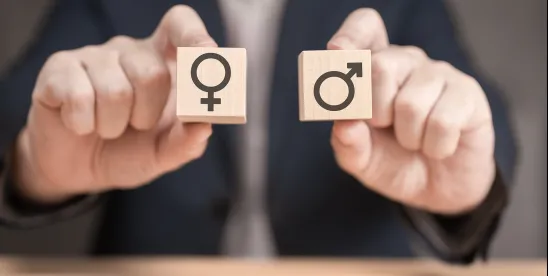On January 20, 2025, President Trump issued an Executive Order titled, “Defending Women From Gender Ideology Extremism And Restoring Biological Truth To The Federal Government” (the “EO”). The EO declares that “[i]t is the policy of the United States to recognize two sexes, male and female.” The EO explicitly rejects “gender ideology,” which, according to the EO, includes the notion “that males can identify as and thus become women and vice versa” and “it is possible for a person to be born in the wrong sexed body.”
Key Provisions of the Executive Order
Aside from declaring that the United States will only recognize two sexes—male and female—the other key points in this EO are as follows:
- Definition of Sex. The EO defines the term “sex” as a person’s “immutable biological classification as male or female.” This specifically excludes the concept of “gender identity,” which the EO deems subjective.
- Sex-Based Distinctions on Federal Policies. Federal agencies are required to use the term “sex,” not “gender,” in all their policies and official documents in enforcing sex-based distinctions.
- Government-Issued Identification Documents. Government-issued identification—such as passports, visas, and federal employment records—must reflect the holder’s biological sex as defined in the EO. This reverses the Biden administration’s policy permitting Americans applying for a passport to use “X,” along with the option for male or female, as a gender marker. Andrea Lucas, acting Chair of the Equal Employment Opportunity Commission (“EEOC”) announced in a recent press release that she has “[e]nded the use of the ‘X’ gender marker” for those filing charges of discrimination (“Press Release”).
- “Privacy in Intimate Spaces” Designated for Women. The EO mandates that single-sex spaces designated for women, including women’s prisons and rape shelters, are designated by biological sex and not by gender identity.
- Investigation and Litigation to Enforce Sex-Based Rights. The EO directs the Attorney General, Secretary of Labor, and EEOC to “prioritize investigations and litigation to enforce the rights and freedoms identified” in the EO. In the Press Release issued by Ms. Lucas, she also announced that one of her priorities for investigations and litigations “is to defend the biological and binary reality of sex and related rights, including women’s rights to single-sex spaces at work.”
- Rescission of Prior EEOC Guidance on Workplace Harassment. The EO explicitly rescinds certain guidance issued by the prior administration related to transgender individuals and gender identity based claims. This rollback includes the EEOC’s guidance on workplace harassment—which contains numerous references to gender identity harassment and discrimination—and other policies directed at LGBTQI+ individuals.
- Limitation on the Scope of the Supreme Court’s Decision in Bostock v. Clayton County. The EO directs the Attorney General to immediately issue guidance narrowing the interpretation of the Supreme Court’s decision in Bostock v. Clayton County—holding that “sex discrimination” under Title VII of the Civil Rights Act includes discrimination on the basis of sexual orientation and gender identity.
Implications for Private Employers
- Employers should anticipate and address questions from employees, especially from LGBTQI+ employees and allies, regarding any policy changes. Employers with policies prohibiting discrimination, harassment, and retaliation on the basis of gender, gender identity, and gender expression can reassure their employees of the company’s commitment to a safe and inclusive workplace.
- Given the EEOC’s stated priority to create “single-sex spaces at work,” employers may find themselves facing conflicting obligations under federal and state law. Employers should stay informed on the developments at the federal level. Such developments might include, for example, litigation instituted by the new EEOC over restroom access and biological sex—which Ms. Lucas indicated could be a priority. Employers must also remain mindful of their obligations under state laws that explicitly prohibit discrimination, harassment, and/or retaliation on the basis of gender identity and sexual orientation.
- Employers should anticipate changes to the EEOC “Know Your Rights: Workplace Discrimination is Illegal” poster, which covered employers are required to post on premises. The poster is undergoing revision pursuant to the EO.
- Employers should expect changes in reporting options for identification forms that include the sex of their employees. For example, it is possible that, in light of the EO, certain government forms may no longer permit employers to include non-binary or similar gender identity information of their employees.
What’s Next?
President Trump’s EO mandates that each agency report on their implementation progress within 120 days. For now, little is known about how agencies will comply with the EO. Although we expect various agencies to begin releasing administrative guidance comporting with the EO in the coming months. Given that some of the EO’s directives may be in conflict with established legal precedent, litigation challenging the EO is possible.



 />i
/>i

